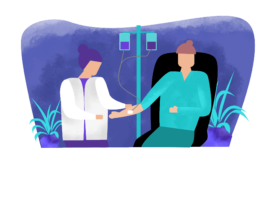Lay summary by Preshon Pillay Edited by Crystal Han This is the lay summary written on the paper by Mélissa Nadeau, Supriya Singh, Lise Belanger, Vanessa Noonan, Lynsey Hamilton, Dr. Michael Boyd, Nicolas Dea, Dr. Brian Kwon, Dr. Scott Paquette, Read More…
Blog Archives: community
Peer mentorships and benefits for individuals with SCI
| 0 commentsLay summary by Jasleen Dhaliwal Edited by Crystal Han This is the lay summary on the original article by iCORDians Robert Shaw, Emily Giroux, Dr. Heather Gainforth, and Dr. Kathleen Martin Ginis. Read the original article here. Why is this Read More…
Predictors of psychological distress and confidence among mobility device users
| 0 commentsLay summary by Harsirat Naraina Edited by Crystal Han This is the lay summary of the original article by ICORD researchers Dr. Ben Mortenson, Dr. Kathleen Martin Ginis, Mike Prescott, Delphine Labbé, and William Miller and their colleagues. Read the Read More…
The effects of SCI on regulation of core body temperature
| 0 commentsLay summary by Arman Mohseni Edited by Crystal Han This lay summary is written based on the paper by Francesca Baschieri, Pietro Guaraldi, Federica Provini, Monica Chiogna, Giorgio Barletta, Annagrazia Cecere, Giuseppe De Scisciolo, Pietro Cortelli, and Giovanna Calanadra-Buonaura. Read Read More…

Breast cancer treatment in women with SCI and health conditions
| 2 commentsLay summary and illustrations by Yasi Yaghoub Edited by Crystal Han This summary is based on the original paper by ICORD researcher Dr. Bonita Sawatzky and her colleagues Celine Edwards, Annemarie Walters-Shumka, Shira Standfield, Tamara Shenkier, and Susan Harris. Read Read More…
Effects of exercise on fitness and health of adults with SCI
| 0 commentsLay summary by Aidan Underwood Edited by Crystal Han This is a lay summary of the original research article by Dr. Kathleen Ginis, Dr. Christopher West, and their colleagues Jan W van der Scheer, David Ditor, Victoria Goosey-Tolfrey, Audrey Hicks, Read More…
Efficiency and perceived energy exertion during usage of pull vs. push wheelchairs
| 0 commentsLay summary by Paula Cameron Edited by Crystal Han This is a lay summary of a research article by Dr. Bonita Sawatzky and her colleagues Alireza Habibi, Megan MacGillivray and Harleen Kalra. Read the original article here. What was the Read More…
Wheelchair users’ perspectives on usability of the adaptive equipment for exercise
| 0 commentsLay Summary by Arman Mohseni Edited by Crystal Han This is a lay summary on the paper by ICORDians Dr. Ben Mortenson, Dr. Jaimie Borisoff, and Dr. Bonita Sawatzky, and their colleagues Rachel Wong, Ashley Stewart, James Laskin, Johanne Mattie, Read More…
What helps & what doesn’t? Outdoor recreation among wheelchair users
| 0 commentsLay summary by Alanna Schwed Edited by Crystal Han This is a lay summary of the original research article by Dr. Ben Mortenson, Dr. Jaimie Borisoff, and their colleagues Ashley Menzies, Carolyn Mazan, and Johanne Mattie. Read the original article Read More…
Serum albumin may help predict neurological recovery after SCI
| 0 commentsLay summary by Frank Yeung Edited by Rona Herzog, Crystal Han This is a summary of a research study conducted by Lukas Grassner, Jan Schwab, Gale Whiteneck, Fred Geisler, and ICORD researchers Dr. John Kramer, Anh Vo, and Catherine Jutzeler. Read Read More…

